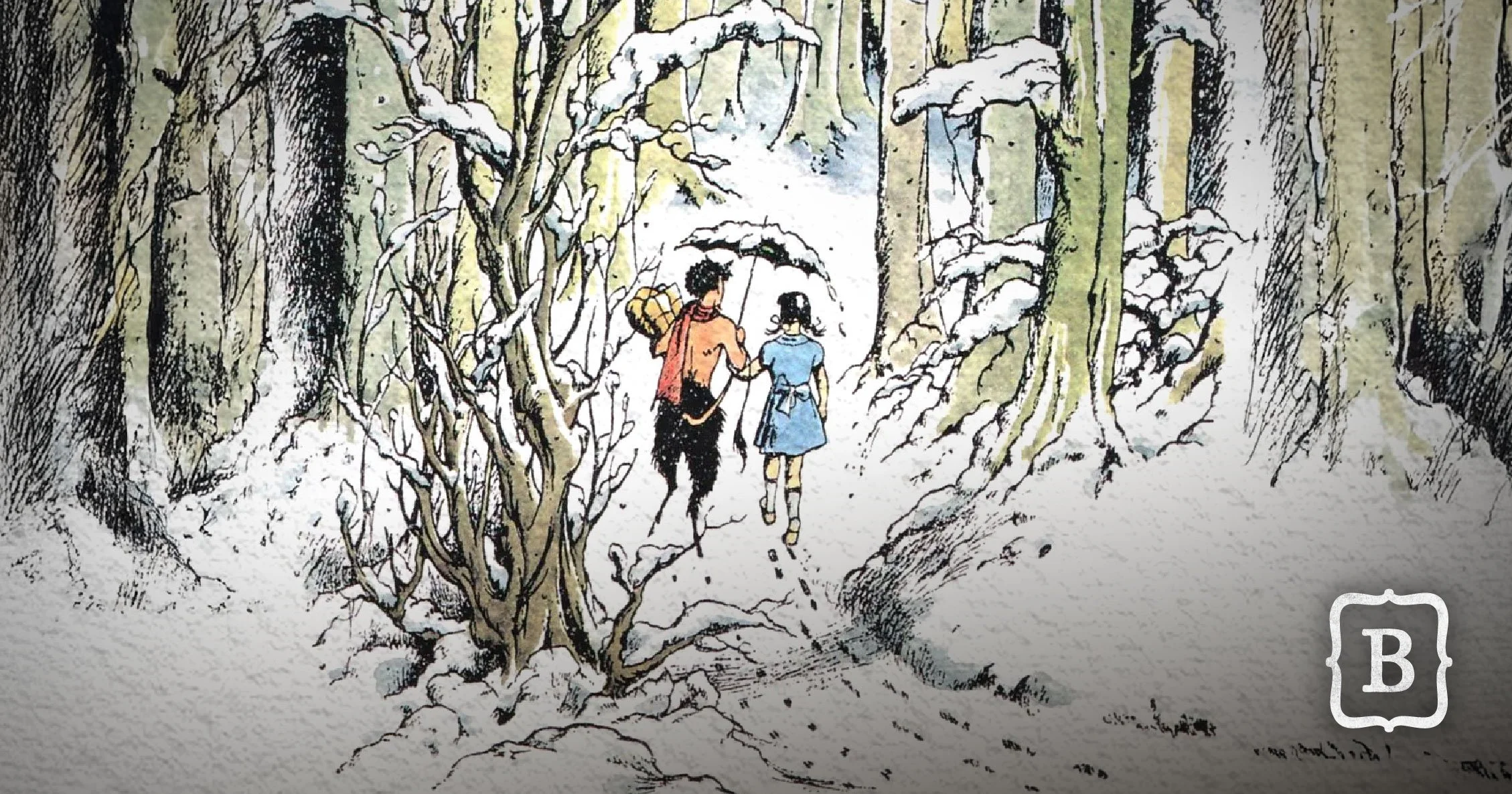75 Years: The Enduring Enchantment of Narnia
This year marks the 75th anniversary of the publication of The Lion, the Witch, and the Wardrobe, the first installment of the beloved “Chronicles of Narnia” series. So as winter swiftly approaches here at Chapel Field, it is especially fitting this year to devote special attention to the “forever winter” that C.S. Lewis created for generations of readers to explore. To honor the book and the essential position that it has held in the modern Christian imagination for the last 75 years, the upper school will be gathering to read the entire book together during part of the school day on both November 24th and 25th before heading into Thanksgiving break.
Non-Christians and Christians alike often assume that C.S. Lewis wrote the “Chronicles of Narnia” to preach a Christian fairy tale to children in a world that was rapidly getting less Christian. But Lewis repeatedly told both his fans and critics that this was not exactly the case. He felt it was an over-simplification of an endeavor that he took very seriously and had contemplated for a very long time. In the years between his conversion to Christianity and the publication of The Lion, the Witch, and the Wardrobe, C.S. Lewis, along with his friend J.R.R. Tolkien, felt compelled to a project that they called “mythopoeia” — “making myth” — because they felt that the modern world that they lived in was “disenchanted.” Western civilization was suffocating in cynicism and spiritual depression due to the literal damage done by the World Wars and the intellectual damage done by the philosophical movements of positivism, progressivism, and realism. Modernity had rejected the warm hearth of myth for the cold laboratory of science — a misguided effort to champion truth had separated it from art, story, imagination, and all the things which make it meaningful.
It was from an urgency to respond to this problem that Lewis wrote The Lion, the Witch, and the Wardrobe. He believed that the imaginative health of the world was cast in a deep disenchanted winter, and so he swung open the door of a beautiful old wardrobe and tossed us all (children and adults alike) through it into a better winter – an enchanted one that was populated with the images that were “a part of the habitual furniture of (his) mind:”
“It all began with images; a faun carrying an umbrella, a queen on a sledge, a magnificent lion. At first there wasn't anything Christian about them; that element pushed itself in of its own accord.”
Lewis was not offering us stories that perfectly represented the stories of the Bible in order to tell us what to think, like allegories, but rather he was offering us a world to escape into — a world of marvelous magic, made all the more marvelous and all the more magical by the marvelous and magical Christian truths that it happened to contain. Lewis described his creative process as such:
“Supposing there was a world like Narnia, and supposing, like ours, it needed redemption, let us imagine what sort of incarnation and passion and resurrection Christ would have there… Alsan does not directly represent Christ. He is an invention giving an imaginary answer to the question, 'What might Christ become like if there really were a world like Narnia, and He chose to be incarnate and die and rise again in that world as He actually has done in ours?'
For Lewis, the point of “The Chronicles of Narnia” was not just the story’s similarity to the events of the Bible; it was also the complete dis-similarity between the world of Narnia and our own. Readers are invited to participate in the “spiritual exercise” of entering into an unfamiliar world and encountering the greatest familiar truths of all: images reminiscent of the good news of Christ’s real incarnation in a dark winter and his sacrifice on the cross — truths as unbelievable and fantastic as the magical world where we can now see them taking place. And since this encounter with the reality of the Gospel happens in the unreality of story rather than a sermon, C.S. Lewis’ readers are gifted a special experience. They walk back through that wardrobe into the real world, and after witnessing the “ancient magic” of divine sacrificial love saving a world from continual winter, the light of the Gospel carries an even stronger warmth by which it can help thaw the real winter that oppresses the imagination of the modern world.
So 75 years later, let The Lion, the Witch, and the Wardrobe plant a longing and a hope in us. Let us hope that every old wardrobe might be a doorway, that every snowy forest might be teeming with spies, that every spring-time might be a kind of Salvation, and that behind every lamp post there might be a faun with an umbrella ready to host us for tea.
Henry Listenberger serves as Academic Dean at Chapel Field and teaches Elementary, Middle, and High School Literature and Rhetoric classes.





